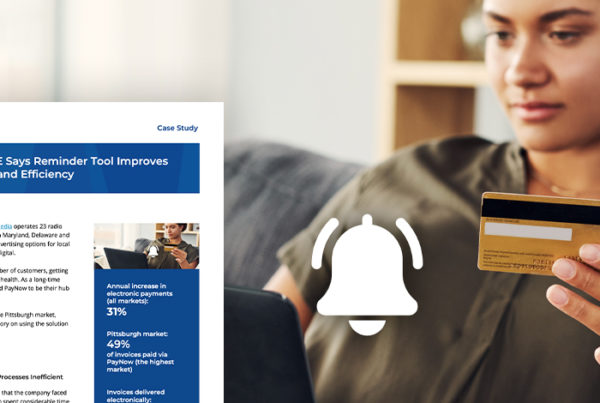What’s holding you back from adopting a better, more modern radio traffic platform? Is it the worry and dread of moving from your current solution to a new one? Radio traffic system migrations are a necessary part of changing products. However, they don’t have to be painful or take several months to complete. They also don’t have to be a waiting or guessing game.
The experts at Marketron have been migrating users to our traffic products for decades. While it is a considerable undertaking, we have dedicated resources and proven strategies to make it as easy as possible.
To help you understand how radio traffic system migrations work, we gathered insights from our team of experts.
Kicking Off Your Radio Traffic System Migration
When stations choose to move to one of Marketron’s traffic products, the process starts with a documented project plan with dates, action items and dependencies.
Long ago, this type of work required coming to your location. Now, we can migrate systems from anywhere with the development of technology and web-based solutions.
Typically, we begin at least two months before the go-live date. A kickoff call begins the process with the necessary resources from your side, such as general managers or traffic managers, and ours.
Initial Steps: Preparing the Items for Migration
Moving from one traffic system to another is never a straight conversion. Even though platforms can be similar, the fields and verbiage used to describe them are unique to each.
Stations would run reports in their current solution to define all this information and what needs to be transferred to the new system. Field mapping is the process of looking at current fields and translating them to the new ones.
Data migration is a manual process due to verbiage variations. There are often many questions about this, and our implementation guide reviews those with customers. Our expert puts on their detective hat to find out how something works in the current system and translate it to the new one.
It can be challenging for users to articulate all of this because it’s just part of their everyday tasks. So, we have to ask the right questions. We also relay specific features of their new radio traffic software that improve certain workflows and functionality.
Getting all the details from the current system to the new one is the bulk of the work before go-live.
Data Validation and Balancing Reports
Once data moves over, we don’t just consider it good to go. We must ensure it’s accurate and correct by validating data with balancing reports. We’ll run those from the old solution and compare them to the report outputs of the new one.
We’re looking at things like:
- Are all contracts and revenue accounted for?
- Is the balancing correct at the contract level and for each advertiser and salesperson?
- Are the different revenue buckets assigned accurately?
Once we confirm these things, users enter the ad copy for spots. All of this happens a few weeks before go-live.
Further evaluation includes running test logs and checking on automation features to ensure they merge as they should.
We review all these tests with customers and verify that they are satisfied with the results. If there are any automation issues within the system or through third parties, we have a specific resource to support any identified concerns.
Our implementation team monitors all this throughout the process.
The last thing before the go-live is for the station to wrap up its final billing cycle in the old system.
Going Live
A radio traffic system migration isn’t complete on the go-live date. There’s still much more to do for a seamless transition. Some key things include:
- Teaching you how to do reconciliation to ensure spots ran at the correct time or if any makegoods are necessary
- Getting accounts receivable into the new solution, which involves knowing what’s outstanding from the last billing cycle and entering that into the new radio traffic platform with transaction details
- Balancing the aging report by advertiser, salesperson, transaction or revenue type and getting the final sign-off that everything is accurate
At this point, you’ve been working with the implementation team for months, but just because you’re live doesn’t mean we go away. We have a transition to support the process. The original team usually stays in touch consistently for another few months. Then, when everyone’s confident that the migration is complete, you would interact with our support team.
We use a training checklist to make this decision, going through all parts of the system.
Migrations Are Never Cookie-Cutter
One of the challenging aspects of radio traffic migrations is that each is custom. Even when similar customers move from the same system to a new one, there will still be exceptions. Because of the nature of this, you must have people with deep experience in these platforms. Otherwise, you risk facing more obstacles.
Each product has specific attributes. They may have many things in common, but the differences are the parts that require this expert eye. One area our team focuses on is standardization. It applies to organizations with multiple markets and sometimes databases. Across the enterprise, they may have inconsistencies, which we advise you to correct to ensure that reporting and other functions are in alignment.
Final Tips for a Seamless Radio Traffic Migration
We make migrations as easy as possible. It’s a big endeavor with many factors, so having a team that’s been in the business for decades matters. Here are some closing tips to keep in mind:
- Welcome questions from your new provider: We have a session with users who show us the reports they use the most. We then discuss expectations, so we cover this from the start rather than finding out much later.
- Get timelines and commitments from your team at the start: There’s a lot of data moving in migrations, so you want to know the expectations. We give our customers estimates in two categories: workload and training. Workload represents what you must do to move data from one system to the next. Training involves daily time with the implementation specialist and classes on using the system.
- Be sure training is customized and accessible: Users receive specialized training for their team. We have live sessions and record them for future use.
- Work with a company that clearly and constantly communicates: Our implementation pros send weekly updates to migrating customers about what’s complete and outstanding.
One of the most important things to us in your migration is that we act as an extension of your staff. We want to get you up and running in the most efficient way with all the checks and balances. It’s not a transactional relationship at all. It requires a deep understanding of your company’s structure, traffic needs and current challenges.
From there, we build a process just for you and get things moving.






